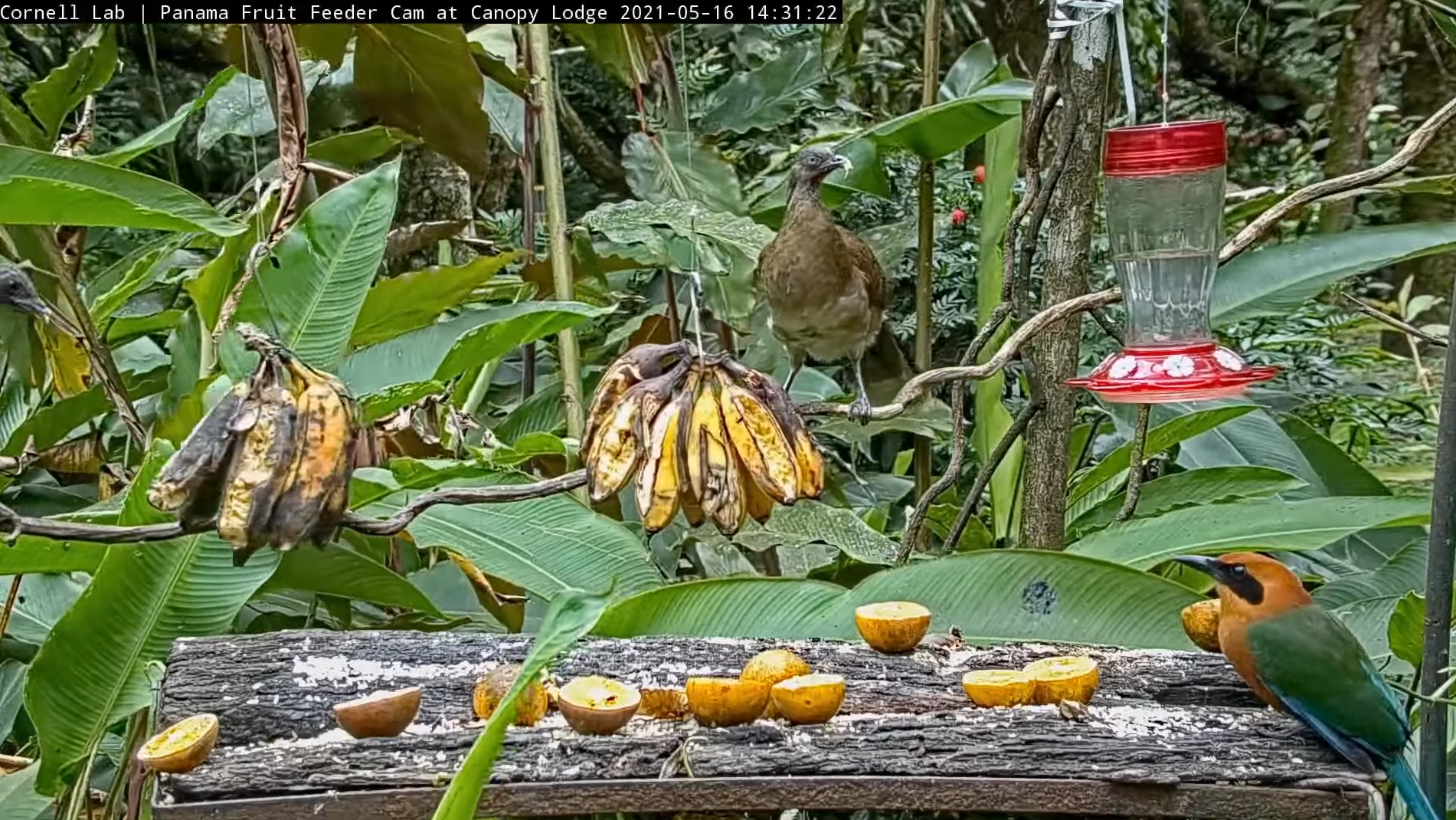Battling Birds: Panama Findings Are In!
June 23, 2021—Posted by Rachael Mady on behalf of Bird Cams Lab
When it comes to foraging at a feeder in Panama, the bigger the bird, the higher it is in the social pecking order
The Bird Cams Lab community joined forces with Cornell Lab of Ornithology researcher Dr. Eliot Miller to better understand the social relationships between birds visiting a feeder in Panama seen on the Cornell Lab of Ornithology’s Panama Fruit Feeder cam. To do this, they watched video clips from the cam and recorded whenever one bird attempted to take the perch or food of another bird (known as a displacement), which Dr. Miller then used to create a “dominance hierarchy.”
A Rufous Motmot successfully displaces a Chestnut-headed Oropendola on the Panama Fruit Feeder cam.
Additionally, the community collected data on what they voted were important factors that could affect displacements: type of food available, number of individuals present, whether physical is made, and the size of the species involved in the displacement.
Once the data was collected, Dr. Miller ran analyses and Bird Cams staff created visualizations that the community explored together via online forums and a live webinar. One particularly interesting finding that many in the community had predicted, was that the heavier species had the higher dominance scores. This finding also aligned with what Dr. Miller had found when he studied social dominance relationships at North American feeders with Project FeederWatch.
A scatterplot of the dominance score and mass of each species that initiated a successful displacement. The size of each point represents the number of successful displacements the species was involved in (initiated or received)–the more displacements the bigger the point. To the right of the scatterplot, species are listed according to their rankings, with the highest ranking species at the top and lowest ranking species at the bottom.
As in many investigations, our discussions about the data left us intrigued and with more questions than answers that we hope can be looked at in future studies.
What about beak size? –Martha Helgerson
Does the wingspan of the birds affect how aggressive or dominant they are? –Rakan Ali
I often see multiple Clay-Colored Thrush together. Does having a wing-man allow birds to be more aggressive? –Jennifer Kuehn
Is there anything that a bird could do behavior-wise to make themselves more vulnerable to being displaced? –Grey Addie
Battling Birds: Panama Edition is now coming to a close as the second co-created investigation with the Panama Fruit Feeder cam (Panama Live was the first), and second investigation to document displacements on a feeder cam (Battling Birds with the Cornell FeederWatch cam was the first). The Bird Cams Lab community, together with Dr. Miller, created a dominance hierarchy of birds that had not been documented before.
To learn more about how these relationships scale up to birds at other feeders and locations, future work would need to look at multiple feeders (increasing the sample size) and over a longer time period (increasing the sampling period). Not only does this work lay the foundational work for future studies, but also gives us more insight into the birds we love watching on this cam.
Thank you to everyone who participated in Battling Birds: Panama Edition. Whether you helped design the study, collected data, explored the data, or reviewed the final report, you helped shape this investigation. Thanks to this team effort, we now know more than ever before about how the birds relate to each other at the feeder seen on the Panama Fruit Feeder cam.
- If you’d like to see more of the patterns the community uncovered from the raw data or the results from the dominance hierarchy modeling, check out the Final Report.
- If you’re interested in accessing the full dataset, email birdcams@cornell.edu.
We invite you to share what we have found with your family, friends, and colleagues, and post below if you have any any thoughts or questions about this investigation.
